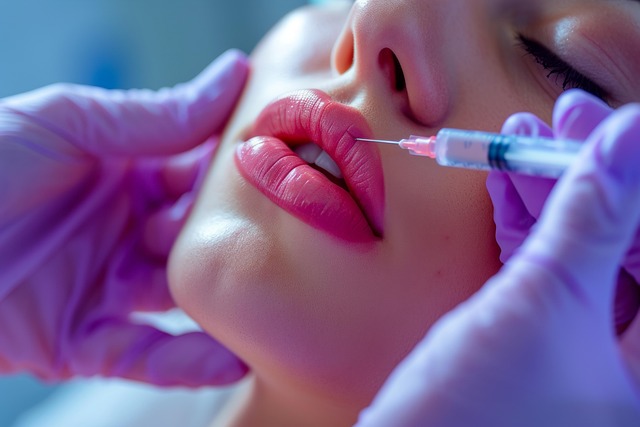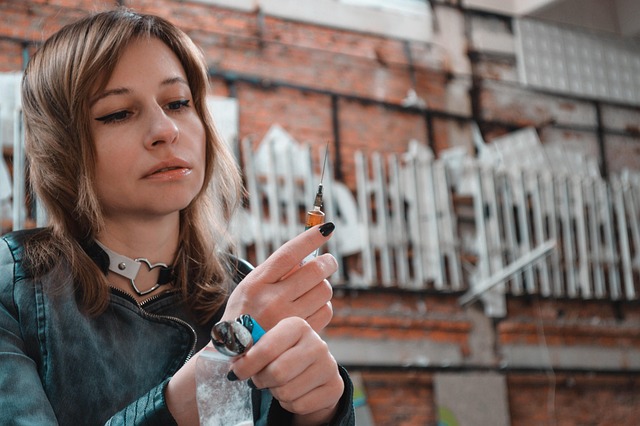Botox injections target crow's feet, fine lines around the eyes caused by muscle contractions. By relaxing these muscles, botulinum toxin prevents skin creasing and environmental damage. This non-surgical procedure offers quick results with minimal downtime, appealing to those seeking a youthful appearance without surgery. After a consultation and preparation, a qualified professional marks and injects Botox into specific muscles. Temporary side effects like redness or swelling are common, but serious reactions are rare. Optimal post-treatment care involves rest, sun protection, and following healthcare advice for a smooth recovery.
“Are you concerned about crow’s feet, those fine lines that frame your eyes? Discover the transformative power of Botox injections as a solution. This comprehensive guide explores the science behind Botox and its effectiveness in smoothing out these age-related concerns. From understanding the causes to navigating the step-by-step procedure, we demystify the process. We’ll also cover benefits, safety considerations, and post-treatment care, empowering you with knowledge about one of the most popular anti-aging treatments available: Botox injections.”
Understanding Crow's Feet: Causes and Impact

Crow’s feet, characterized by fine lines and wrinkles at the outer corners of the eyes, are a common concern for many individuals as they age. These delicate creases form due to repeated muscle contractions, especially during expressions like smiling, frowning, or squinting. Over time, these muscles can weaken the skin’s support structure, leading to the appearance of crow’s feet.
The impact of crow’s feet goes beyond aesthetics. As the skin loses its elasticity and firmness, it becomes more susceptible to damage from environmental factors like sunlight and pollution. This accelerated aging process not only affects the eyes but can also create a noticeable difference in facial symmetry. Botox injections have emerged as a popular solution, offering a targeted approach to relax the muscles responsible for these wrinkles, thereby reducing their visibility and helping individuals regain a more youthful appearance.
What is Botox? Unraveling the Science

Botox, or botulinum toxin, is a protein produced by bacteria that has found its way into the world of dermatology and cosmetic procedures. When administered through injections, it works by temporarily blocking specific muscles responsible for causing facial lines and wrinkles, particularly crow’s feet—the fine lines that form at the outer corners of the eyes. This effect is achieved by paralyzing the muscles, preventing them from contracting and thus reducing the appearance of aging signs.
The science behind Botox injections involves a complex interaction between the toxin and the body’s nervous system. Once injected, Botox binds to nerve endings and disrupts the signal that causes muscle contraction. This results in a smoothed-out complexion, offering a non-surgical alternative to more invasive procedures for those seeking to combat the signs of aging discreetly.
The Benefits of Botox Injections for Crow's Feet

Botox injections have emerged as a popular and effective non-surgical treatment for reducing the appearance of crow’s feet—fine lines and wrinkles that often surround the eyes and can give an individual a tired or worried look. This minimally invasive procedure offers several significant advantages, making it a preferred choice for many seeking youthful-looking skin.
One of the key benefits is its ability to relax the facial muscles responsible for creasing the skin around the eyes. By injecting Botox into these specific muscle groups, practitioners can prevent the contraction that leads to crow’s feet. This results in a smoother, more relaxed appearance, giving individuals an instant boost in confidence. Moreover, Botox injections are known for their quick recovery time, with most people experiencing minimal downtime after the treatment, allowing them to return to their daily activities promptly.
The Procedure: Step-by-Step Guide to Botox Treatments

Botox treatments for crow’s feet involve a simple, non-invasive procedure that has become a popular choice for many seeking to reduce the appearance of fine lines and wrinkles. Here’s a step-by-step guide to what you can expect:
1. Consultation: Start by meeting with a qualified healthcare professional who specializes in aesthetic treatments. They will assess your skin, discuss your concerns, and determine if Botox injections are suitable for you. This is an essential step to ensure safe and effective treatment.
2. Preparation: Before the procedure, avoid using any medications or supplements that may increase bleeding risk. Your provider might recommend discontinuing these for a few days prior. On the day of treatment, arrive at the clinic relaxed, as minimal discomfort is expected.
3. Injection Sites: The specialist will identify and mark the areas where injections will be administered, typically around the eyes. Using a fine needle, they carefully inject Botox into these targeted muscles, working to relax them and prevent the formation of crow’s feet.
4. Post-Treatment Care: After the injections, you might experience mild redness or swelling at the injection sites, which is usually temporary. Avoid strenuous activities and direct sun exposure for a while, as this can irritate the skin. Most people resume their regular activities shortly after the treatment.
Safety and Side Effects: What to Expect

Botox injections for crow’s feet are generally considered safe when administered by a qualified medical professional. However, like any medical procedure, there are potential side effects to be aware of. Temporary redness, swelling, and bruising at the injection site are common. Some patients may experience mild discomfort or a tingling sensation during the treatment. In rare cases, headaches, neck stiffness, or difficulty swallowing can occur, but these typically resolve within a few days.
It’s essential to discuss any concerns or medical history with your provider before treatment. They will guide you on what to expect post-procedure and how to manage any adverse reactions. Following their advice for care after Botox injections can help minimize the risk of complications and ensure the best possible outcome.
Maintenance and Follow-up Care After Botox Injections

After receiving Botox injections for crow’s feet, proper maintenance and follow-up care are essential to maximize results and ensure a smooth recovery. It’s crucial to avoid strenuous activities and intense sun exposure for the first 24 hours post-treatment to prevent bleeding and bruising. Keeping the treated area clean and moisturized is vital; gently washing with a mild cleanser and applying a light layer of moisturizer daily will aid in healing.
During the weeks following Botox injections, it’s important to be mindful of any potential side effects and to maintain a healthy lifestyle. Staying hydrated, eating nutritious meals, and avoiding excessive alcohol consumption can support the body’s natural healing process. Regular check-ins with your healthcare provider or esthetician are recommended to assess progress, address concerns, and discuss additional care if needed.
